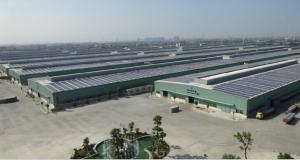Utl Gamma Solar Inverter
Utl Gamma Solar Inverter Related Searches
Best Inverter Solar Panel Solar Panel On Roof Rack Inverter To Solar Panel Ratio Solar Panel Decking Lights Solar Panel Inverter Box 1000 Watt Solar Panel Inverter 12 Volt Solar Panel Inverter Plastic Solar Lanterns Buy Solar Panel Inverter Solar Panel Inverter CostHot Searches
Type Of Inverter For Solar Types Of Inverter For Solar Used Solar Inverter For Sale Inverter Size For Solar System Solar Edge Inverter For Sale 5kw Solar Inverter For Sale Solar Inverter For Sale Solar Inverter For Battery Solar Inverter For Split Ac Solar Inverter For Laptop Solar Inverter For Fridge Solar With Inverter Price Solar Inverter With 2 Battery Solar Inverter Price In China Best Solar Inverter In China Solar Inverter Price In Dubai Solar Inverter Price In Uae Solar Inverter Price In Kenya Solar Inverter Price In Kerala Solar Hot Water Collectors For SaleUtl Gamma Solar Inverter Supplier & Manufacturer from China
Okorder.com is a professional Utl Gamma Solar Inverter supplier & manufacturer, offers integrated one-stop services including real-time quoting and online cargo tracking. We are funded by CNBM Group, a Fortune 500 enterprise and the largest Utl Gamma Solar Inverter firm in China.Hot Products
FAQ
- A solar inverter handles variations in grid frequency by continuously monitoring the frequency of the grid and adjusting its own output accordingly. If the grid frequency increases, the inverter decreases its output to maintain a stable supply. Conversely, if the grid frequency decreases, the inverter increases its output to compensate for the drop. This enables the solar inverter to synchronize with and support the grid, ensuring a reliable and stable power supply.
- The role of a solar inverter in a solar-powered desalination system is to convert the direct current (DC) generated by the solar panels into alternating current (AC) that can be used to power the desalination equipment. It ensures the efficient utilization of solar energy by transforming it into a usable form for the desalination process.
- The maximum DC input voltage for a solar inverter typically depends on the specific model and manufacturer. However, in general, most solar inverters have a maximum DC input voltage ranging from 600 to 1000 volts.
- The typical efficiency ranges for different types of solar inverters can vary depending on factors such as the technology used, the quality of the inverter, and the specific application. However, in general, string inverters typically have efficiency ranges of around 95% to 98%, while microinverters can achieve efficiencies ranging from 95% to 99%. On the other hand, central inverters, which are commonly used in large-scale solar installations, often have efficiency ranges of 97% to 99%. It's important to note that these are average ranges, and actual efficiency can vary depending on various factors and specific product specifications.
- A solar inverter handles grid voltage variations by continuously monitoring the voltage levels of the grid. When the grid voltage increases or decreases beyond a certain range, the inverter adjusts its output voltage accordingly to maintain a stable and consistent supply of electricity. This ensures that the solar power system remains synchronized with the grid and prevents any damage to the inverter or the connected equipment.
- Yes, a solar inverter can be used with different types of energy storage systems. Solar inverters are designed to convert the direct current (DC) generated by solar panels into alternating current (AC) that can be used to power electrical devices. The AC output from the solar inverter can be connected to various energy storage systems, such as batteries, to store excess energy generated by the solar panels for later use. Therefore, solar inverters are compatible with different types of energy storage systems, allowing for efficient utilization of solar energy.
- Solar inverters are highly efficient, with most modern models achieving efficiency levels above 95%. This means that they can convert a large majority of the direct current (DC) electricity generated by solar panels into alternating current (AC) electricity for use in homes or businesses. The high efficiency of solar inverters helps maximize the overall energy output and financial benefits of solar power systems.
- Yes, a solar inverter can be used in regions with high levels of electromagnetic interference. However, it is important to ensure that the inverter is designed and manufactured to meet the necessary electromagnetic compatibility (EMC) standards and has the appropriate shielding measures in place to minimize any interference or disruption caused by electromagnetic noise.













































